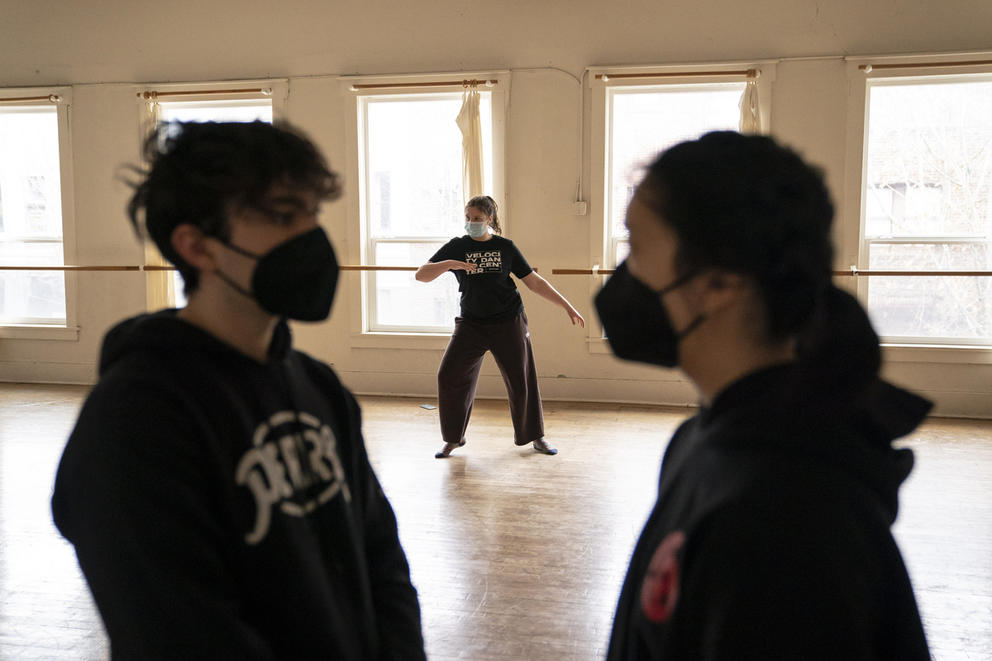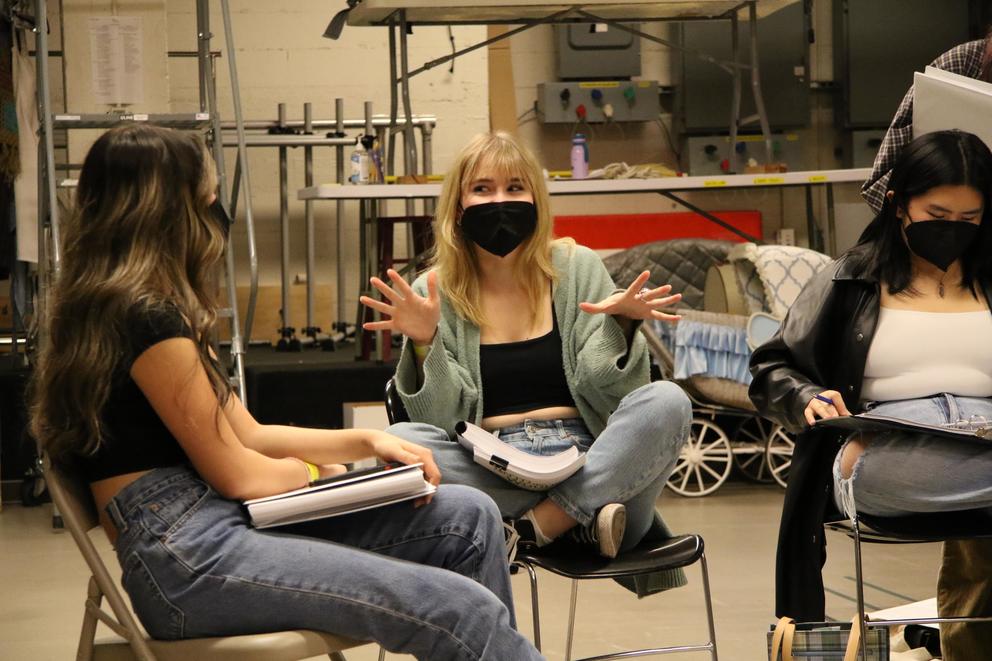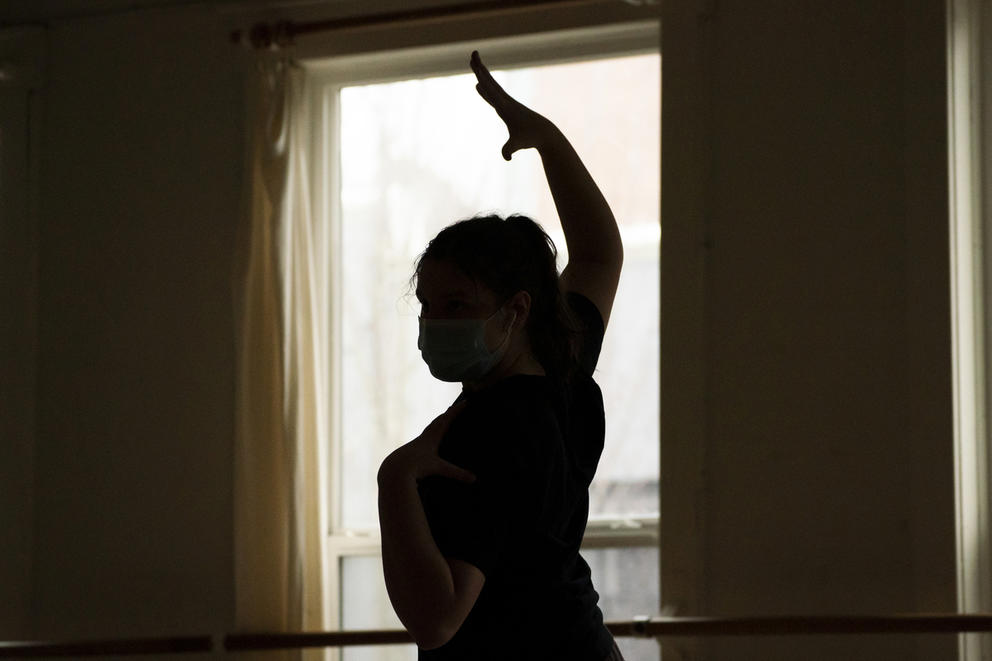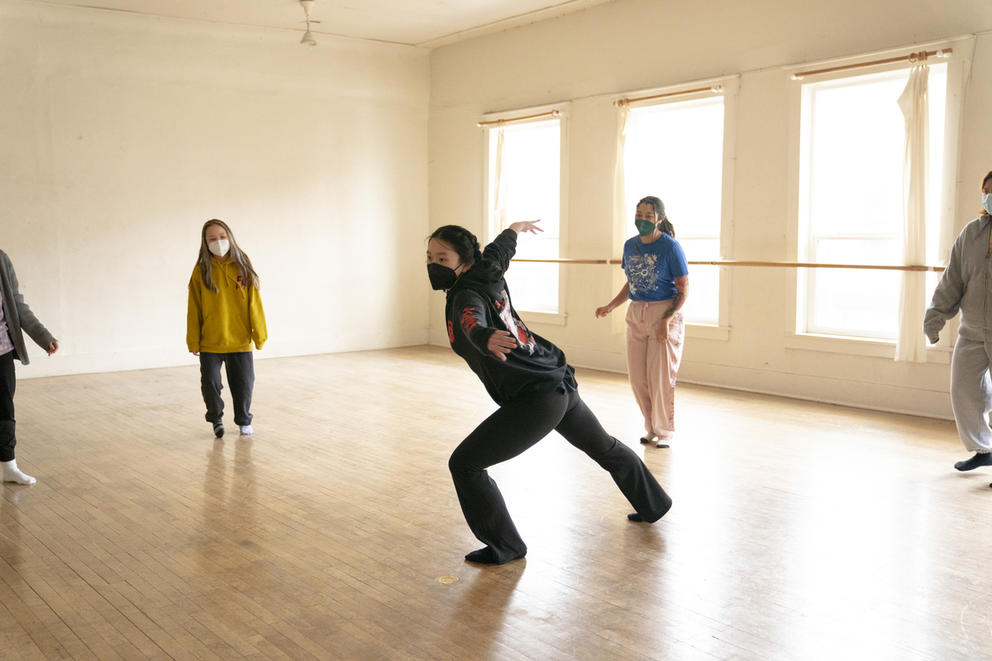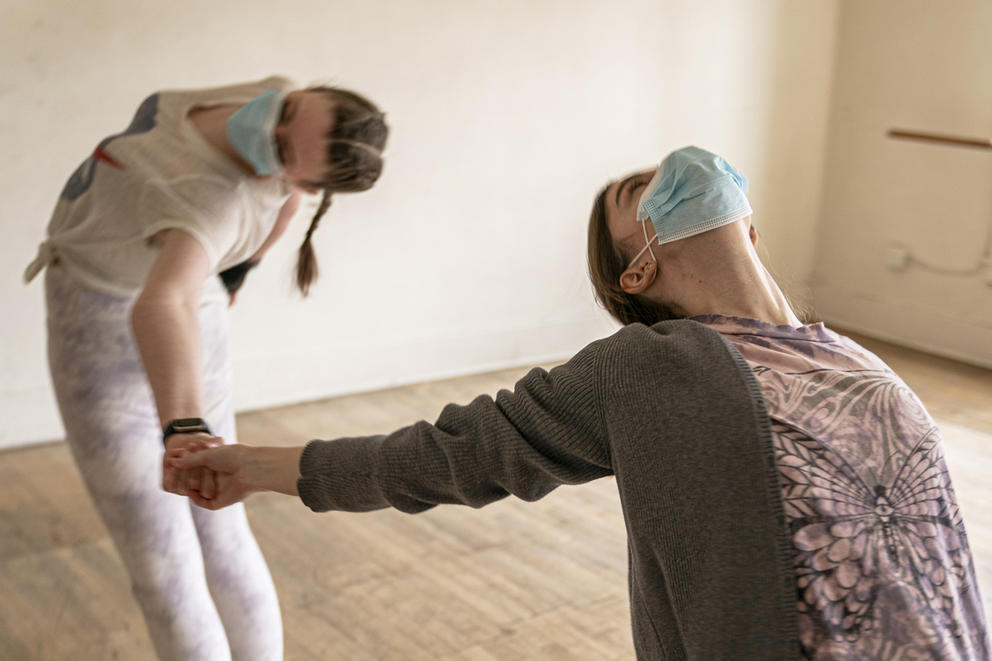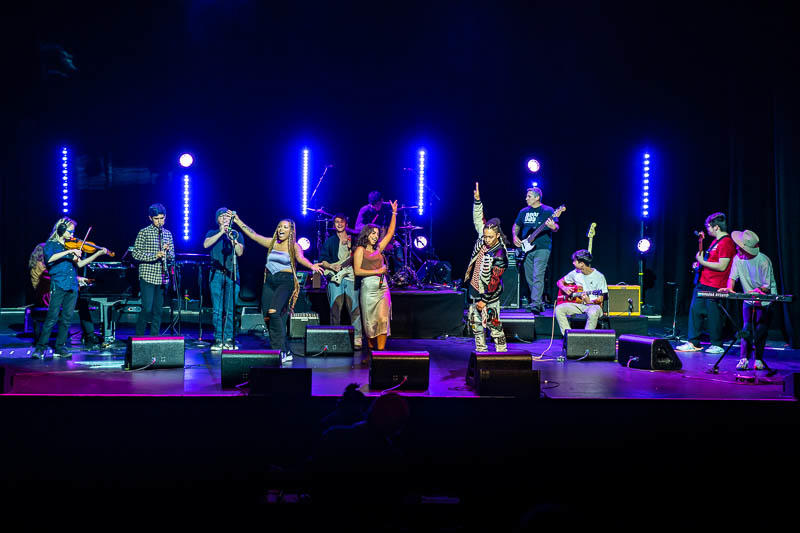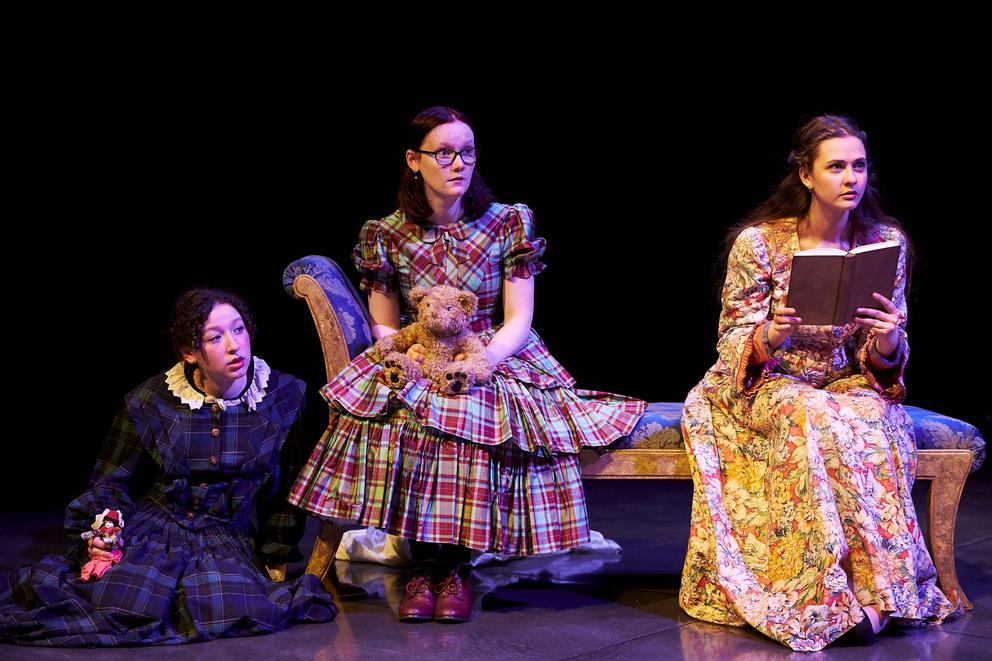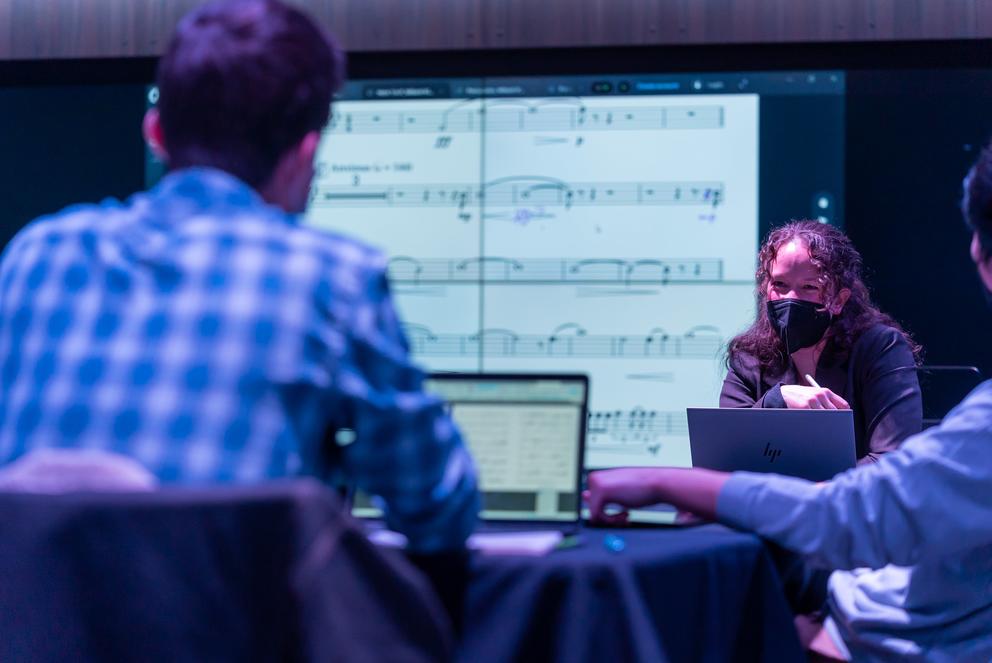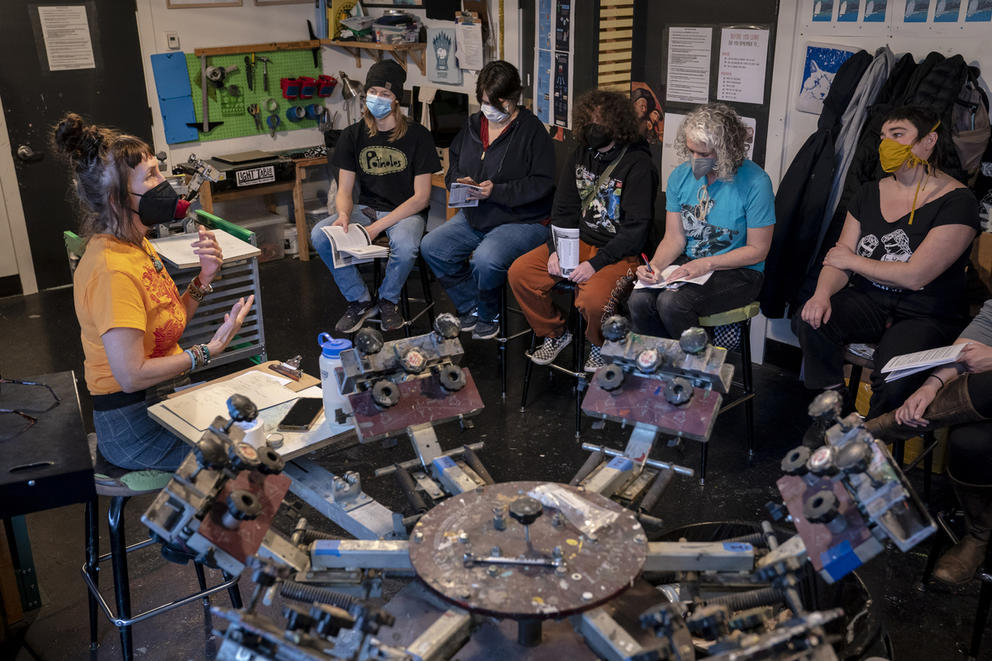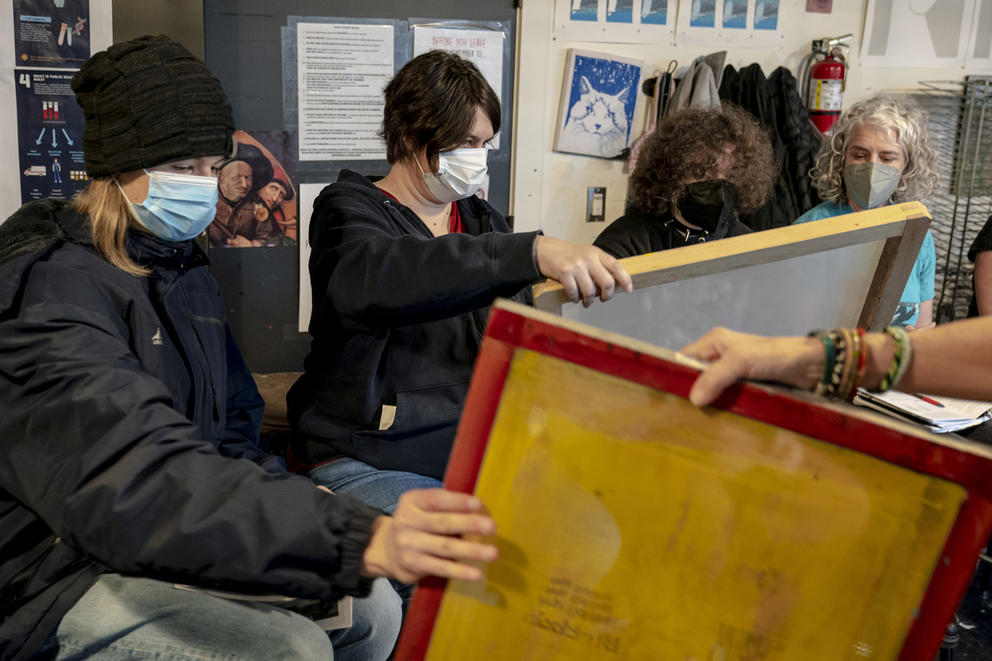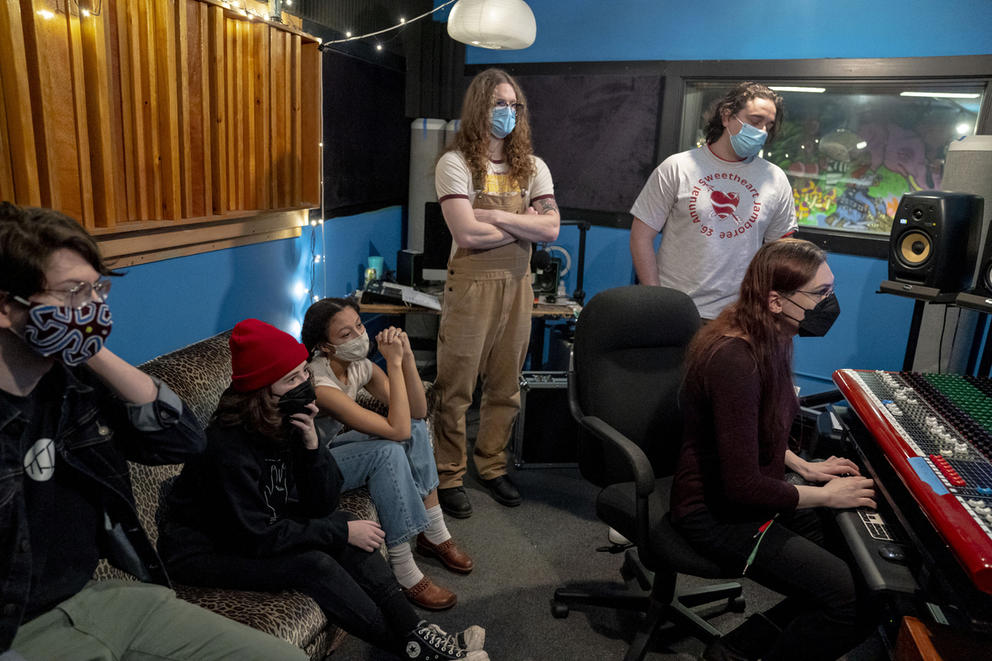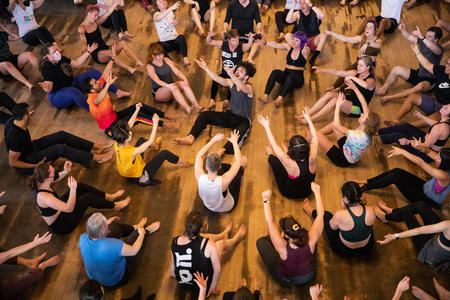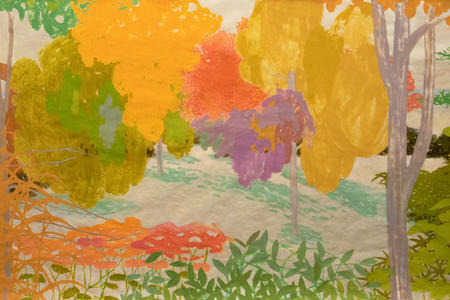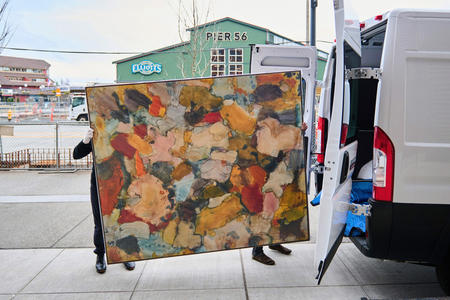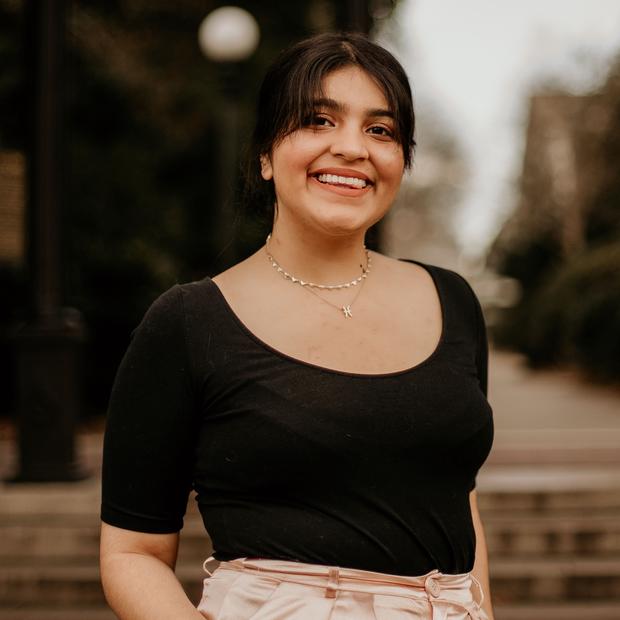“Don’t you know what’s out there in the world?” the Witch sings to Rapunzel, gently but warning. “Stay a child while you can be a child, with me,” she continues, softly. Rapunzel seems to concede, but will she?
It’s a scene that has been played countless times, from Broadway to community theaters across the country. But this instance stands out because the performers are teenagers, Natalia Ortiz-Villacorta and Alexa Thompson, on the verge of making their own way out there in the world.
And as high school students participating in this year’s Rising Star Project at The 5th, they’re also deciding whether to walk forward into a career in the arts.
“They’re in their formative years of learning and determining what they’re going to be moving into,” says Ariel Bradler, “and for some, the concept of the career-oriented artist is not immediately tangible.” As director of education and engagement at The 5th, Bradler helps run this pre-professional program designed to train Seattle’s next generation of musical thespians.
“We want to offer the experience of [showing that] this is a career, and here’s all of the working artists in the field that you get to interact with, and here’s all the different ways you can actually interact with the art form,” Bradler says.
Beyond the countless hours of training and experience required, the pathway to becoming a performing artist is peppered with specific challenges in this city at this moment.
First, “day jobs” in the arts — which sustain many artists as they pursue their creative work — are limited. When the pandemic hit in 2020, the local arts, entertainment and recreation sector lost almost 60% of jobs, according to data from the Washington State Employment Security Department. In 2022, employment in the arts still hadn’t fully recovered, holding at about 24 percent below pre-pandemic levels.
Seattle has also experienced a cultural shift — from sleepy grunge-music incubator to shiny tech hub. Combined with the increased emphasis on STEM curricula in schools in recent decades, that shift can give the impression that focusing on artistic pursuits isn’t a good idea.
In spite of — and perhaps because of — these challenges, several Seattle arts organizations are putting time and resources into raising the next generation of performing artists through short-term, intensive, experiential programs.
Rising Star Project at The 5th Avenue Theatre
What it is: A student musical theater production performed on The 5th Avenue Theatre’s main stage. This year, the musical is Stephen Sondheim’s Into the Woods, which was performed by a professional cast at The 5th in February and early March.
Time frame: Seven weeks, after school and weekends
Ages: 14-19, audition required
Next up: Into the Woods, The 5th Avenue Theatre, March 16 - 18 ($20-$25)
Asha Navaratnasingam (who goes by the stage moniker Asha Grace), 18, is used to working on stage productions while handling her school and work responsibilities — but the Rising Star Project takes her time-management skills to another level. She rehearses five days a week for up to eight hours at a time. Still, the young actor, who plays Cinderella in Into the Woods, doesn’t complain.
“For the future, I’m gonna have to learn how to manage a side career with theater — because usually theater isn’t a sustainable job by itself,” Navaratnasingam says.
Founded in 2011, the Rising Star Project works to give students experience in musical theater — from performing to technical work to community engagement — by having them put on a show. Students shadow career professionals and receive mentorship. Bradler says the point is to show students what it’s like to work in musical theater professionally. Things like taking safety walks before rehearsal or taking breaks at certain times as required by a union are included.
According to The 5th’s Bradler, half of RSP participants go on to study musical theater in college, and around a quarter go on to become professionals.
“We’re really trying to get them into that professional cycle, but also pausing and offering moments where we’re like, ‘What makes sense? What questions do you have?’” Bradler says. “They know that they like theater and want to be involved in some way … so it’s our job to take that and show them what they can do with it.”
Young Choreographers Club via Velocity Dance Center
What it is: A choreography workshop series headed by the Seattle dance artist Moonyeka and rotating faculty.
Time frame: Eight weeks meeting weekly on Saturdays at Open Flight Studio
Ages: 14-24, audition not required
Next up: Young Choreographers Club performances featuring the 2023 YCC Cohort, 12th Avenue Arts, March 18 (Free)
On a chilly Saturday in March, dancers slither and roll on a hardwood floor, warming up for the upcoming Young Choreographers Club session at Open Flight Studio in the University District. The lead teaching artist, Moonyeka, instructs loudly over a disruptive, dysfunctional heater in the background.
Located at the top of a narrow set of stairs above a pho restaurant on The Ave, the simple open space has mirrors along one wall, windows on the other and little else. The group of students is dressed in sweatpants and T-shirts, relying on their movements to keep from freezing. But no one really minds.
They didn’t come to the YCC, programmed through Velocity Dance Center, for a regimented dance studio experience. In fact, the club’s creative freedom is precisely what made it attractive for 18-year-old Vivian Augustine. She was intrigued after having become disillusioned with more rigid forms of dance training.
“I grew up in the [ballet and jazz dance] studio space, and it just wasn’t accessible physically, financially, creatively or just mentally, emotionally as a human being,” Augustine says. “It felt like another form of school, even though learning was supposed to be fun.”
The YCC, currently in its first year and serving 21 students, is not as formal as an institution like the 49 year old Pacific Northwest Ballet School. PNB’s professional division requires students to participate in the program for one to two years with full-day instruction.
By contrast, the YCC lasts only two months. Students are encouraged to make their own routines rather than following predetermined choreography. Guest instructors like Nia-Amina Minor and Imani Sims share knowledge about dance and related fields such as dance writing and dance filming.
Students also learn about the different career paths they can take, from joining a company to perhaps mirroring their instructor, Moonyeka, who focuses on teaching and performing locally. (Moonyeka will launch their own collective, House of Kilig, in May.)
“Inviting them to be expansive is a big way that I’ve seen them find more possibility, versus [a] limitation or scarcity mindset around the ‘professionalism’ of dance,” says Moonyeka, who encourages the students instead to practice self-determination. “What kind of dance are you wanting to do? Do you like dancing for somebody or do you want to be a director?”
More Music @ The Moore
What it is: A hands-on educational and performance program showcasing aspiring and emerging local musicians across a variety of genres.
Time frame: Three months, January-March
Ages: 14-21, audition required
Next up: More Music @ The Moore, Moore Theatre, March 24 ($10-$20)
With raucous crowds and a diverse lineup of bands playing music from Mongolian to alternative to disco, the annual More Music @ The Moore concert showcases the excitement of being a young musician on stage. And with some 1,200 people packing into the historic venue, the experience is well beyond a high school talent show.
“I’ve heard people commonly say, ‘Oh, I was expecting I was coming to a kiddie show,’” says Sarah Strausbaugh, associate director of community programs for Seattle Theatre Group (which manages the Moore). “It really is a high level of performance … It’s people’s chance to see the next generation — or, really, the current generation of music in our community.”
Now in its 22nd year, More Music @ The Moore has been an early incubator for Northwest musicians from “Thrift Shop” singer Macklemore to classical singer J’Nai Bridges (nicknamed “the Beyonce of opera”). Participants work with local mentors and nationally renowned music directors to hone performance skills. This year the musical director is Grammy-award winner Mike Elizondo, who has worked with artists such as Dr. Dre, Fiona Apple and Lin-Manuel Miranda.
Bandmates Emma Wang and Oliver Crosby from the duo Cherry Ferrari (who bill themselves as “loud music from the quiet side of Seattle”) will be among the performers this year. The Kirkland-based 17-year-olds are starting to think about college and consider the possibility of becoming professional musicians.
Recognizing that they don’t know for sure what will happen down the road, they’re hoping to release an album this year. And they’re thankful for the Moore teaching them about collaborating with musicians whose genres are completely different from their own disco funk.
“[We’re] learning how to coordinate with everyone on stage and working with arrangements and making sure that everyone is doing their part,” Crosby says. “It’s a cool experience learning how to put so many musical artists on the same track and make it all sound good in the end.”
Teen Vocal Studio at Seattle Opera
What it is: Training in the art of opera through master classes, workshops, coaching and performances.
Time frame: Seven months
Ages: 14-18; must be in high school; audition required
Next up: Teen Vocal Studio recital, Seattle Opera, April 22 (Free; RSVP encouraged)
Seattle Opera recently presented the world premiere of A Thousand Splendid Suns, based on Khaled Hosseini’s bestselling novel of the same name. At some point during the run, performer Rafael Moras, who plays Tariq in the production, stumbled upon a Teen Vocal Studio practice. Excited by the idea of a youth opera education initiative, he wanted to talk to the students.
Sara Litchfield, associate director of youth programs at Seattle Opera, invited him to speak at a rehearsal to give the students one example of what an opera career looks like. The curious youth were rapt, asking Moras a range of questions: What does your schedule look like? How do you deal with the competitiveness of opera? How much creative freedom do you have?
“The program is giving them a realistic perspective of what it means to have a career in the arts,” says Litchfield. “It might look like having multiple jobs at once, and it might look like creating your own opportunities, and it might look like a lot of auditions where you hear ‘No’ … We talk about that, and we do so in a way that doesn’t sugarcoat it.”
The students also learn about vocal technique, acting and writing in the International Phonetic Alphabet, and are currently studying operatic diction in French and Italian. Litchfield says the program, which has been in place since 2015, teaches the students the same things a college freshman pursuing a vocal performance degree would learn. She notes that the majority of participants go on to pursue music in college.
And this year, Hallie Schmidt, a 2013/14 graduate of the Teen Opera Players (the original iteration of TVS), is returning to Seattle Opera to play Mariana in Frida Kahlo and the Bravest Girl in the World, a community performance production that will tour local schools this summer.
Young Composers Workshop at Seattle Symphony
What it is: A workshop series teaching the art of composition in preparation for a final score to be performed by the Seattle Symphony.
Time frame: 15 weeks
Ages: 18 or younger, application required (including recordings and compositions)
Next up: Young Composers Workshop concert, Benaroya Hall, May 18 (Free)
“Poor clarinets are gonna die,” says Angelique Poteat, eliciting laughter from the adolescents sitting in front of her. She is referring to a cue for staggered breathing (a technique to ensure there are no breath gaps in a musician’s performance) on a score written by one of the young adults sitting in front of her.
In the high-tech, intimate Octave 9: Raisbeck Music Center space housed in a corner of the Benaroya Hall complex, students from 12 to 18 sit at a U-shaped table facing Poteat. The projector in front of them displays a student composition, covered in scribbles from Poteat — not unlike an English paper graded by a meticulous teacher. One by one, she goes through each of the student compositions, offering notes and feedback.
Poteat is the Seattle Symphony’s current artist in residence and the director of the Merriman-Ross Family Young Composers Workshop, where students learn how to create contemporary classical compositions. As their capstone, those compositions are performed by members of the Seattle Symphony. In celebration of the workshop’s 30th anniversary, this year the young composers’ pieces will be performed by the full orchestra.
“So many orchestras are programming music by deceased composers,” Poteat says. “It’s one of these things that it’s hard to see yourself doing unless you actually get the hands-on experience.”
Poteat, who grew up in Snohomish and on Whidbey Island, participated in this same program two decades ago, and said it inspired her to become a professional composer. Now she’s paying it forward. Every graduating senior this year is applying to college music programs, Poteat notes.
“My role is to really encourage them to learn whatever they can … to have the knowledge about various opportunities that are available to them,” Poteat says. “And as for where they take that, that’s really up to them.”
The Vera Project
What it is: Founded in 2001, The Vera Project offers classes and workshops for subjects such as screen printing, recording and mixing, and concert lighting.
Time frame: Year-round
Ages: Open to all; target demographic 12-24 years old; no audition required
Next up: Sharing the Stage, which pairs professional musicians with student bands, presents Beautiful Freaks + Guests in concert at The Vera Project, March 17 ($10-$16)
The pandemic affected young people in a specific way, depriving them of experiences crucial to socialization and development. It hit during Drew Goad-Pacheco’s freshman year at Edmonds Woodway High School. While the isolation was fruitful in its own way — he learned how to play the guitar — returning for his junior year in-person was difficult.
Then he discovered The Vera Project. The music and arts space dedicated to all-ages concert programming also offers youth training in screen printing, audio recording and mixing, concert lighting and other music-industry-adjacent skills. Part concert venue and part education center, Vera has always offered a mix of options for youth looking to get involved in the music industry.
“It was pretty much literally the best thing that’s happened to me in a really long time,” Goad-Pacheco says.
Through Vera, Goad-Pacheco met like-minded teens who share his passion for music and are looking to pursue it professionally. With what he’s learned from sound-mixing classes and his jam sessions with friends at Vera, Goad-Pacheco is now working on an album.
That’s not an unusual trajectory for youth involved in the organization, where around a quarter of participants go on to pursue the arts professionally, according to community engagement coordinator Maya DeAvilla. And that’s the point.
“Young art should be prioritized everywhere,” says DeAvilla. “And I think the best that we can do here is offer that mentorship, offer that support — and just encourage young folks to pursue their dreams and whatever it is they want to do in the community.”
Get the latest in local arts and culture
This weekly newsletter brings arts news and cultural events straight to your inbox.

